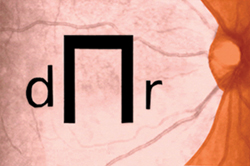


An Introduction : Visual Language for the Blind
Project GoalsElizabeth Goldring, a poet at the Center for Advanced Visual Studies (CAVS), was first introduced to the scanning laser ophthalmoscope (SLO) during a visit to her doctor about 10 years ago. At the time she was blind (surgeries have since restored some of her vision).
To better examine Ms. Goldring's eyes, her doctor asked her to peer into the SLO. With the machine he projected an image directly onto the retina of one eye, past the hemorrhages on the front of the eye that contributed to her blindness (at the same time he observed an enlarged image of the retina on a monitor). The idea was to determine whether she had any healthy retina left. It turns out that she did, and was able to see the image he projected-a stick figure of a turtle.
But the turtle wasn't very interesting, Ms. Goldring remembers. So she asked her doctor to write the word "sun" and transmit that through the SLO. "And I could see it!" she said. "That was the first time in several months that I'd seen a word, and for a poet that's an incredible feeling."
Realizing the potential of the SLO for nonmedical applications such as viewing simple texts, Ms. Goldring contacted Robert Webb, the inventor of the SLO and a senior scientist at the Schepens Eye Research Institute in Boston. Their collaboration has since led to stunning demonstrations of the power of the tool, including one in 1990 when Ms. Goldring saw the face of a close friend for the first time. (Although surgery has given her back some vision, faces still appear to her as "moons" with slight demarcations for where the eyes, mouth, and nose should be.)
Ms. Goldring has also designed a "visual language" for the SLO consisting of short words that incorporate graphics and symbols that illustrate the words' meanings and make them easier to see. She is using this language to create short texts, such as poetry and poem animations, that can be enjoyed by people who are visually challenged. (read the rest of the article)
To keep the visual sense active even if it has been damaged.
To create useful, useable vision interfaces for people who are blind or visually challenged in order to fight visual isolation.
To offer interactive cybervision environments in which people who are blind or visually challenged can communicate visual information--and create visual experiences for themselves as well as the fully sighted community.